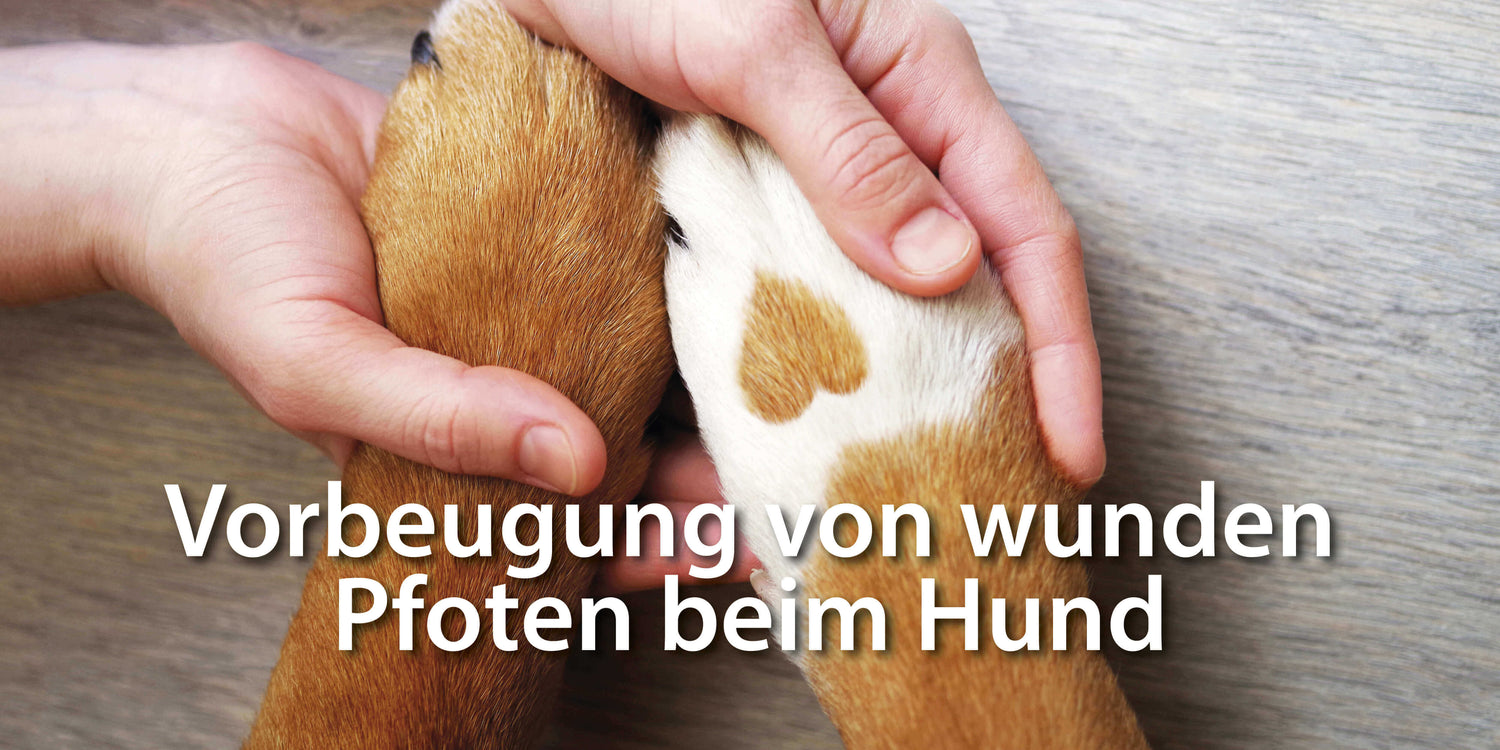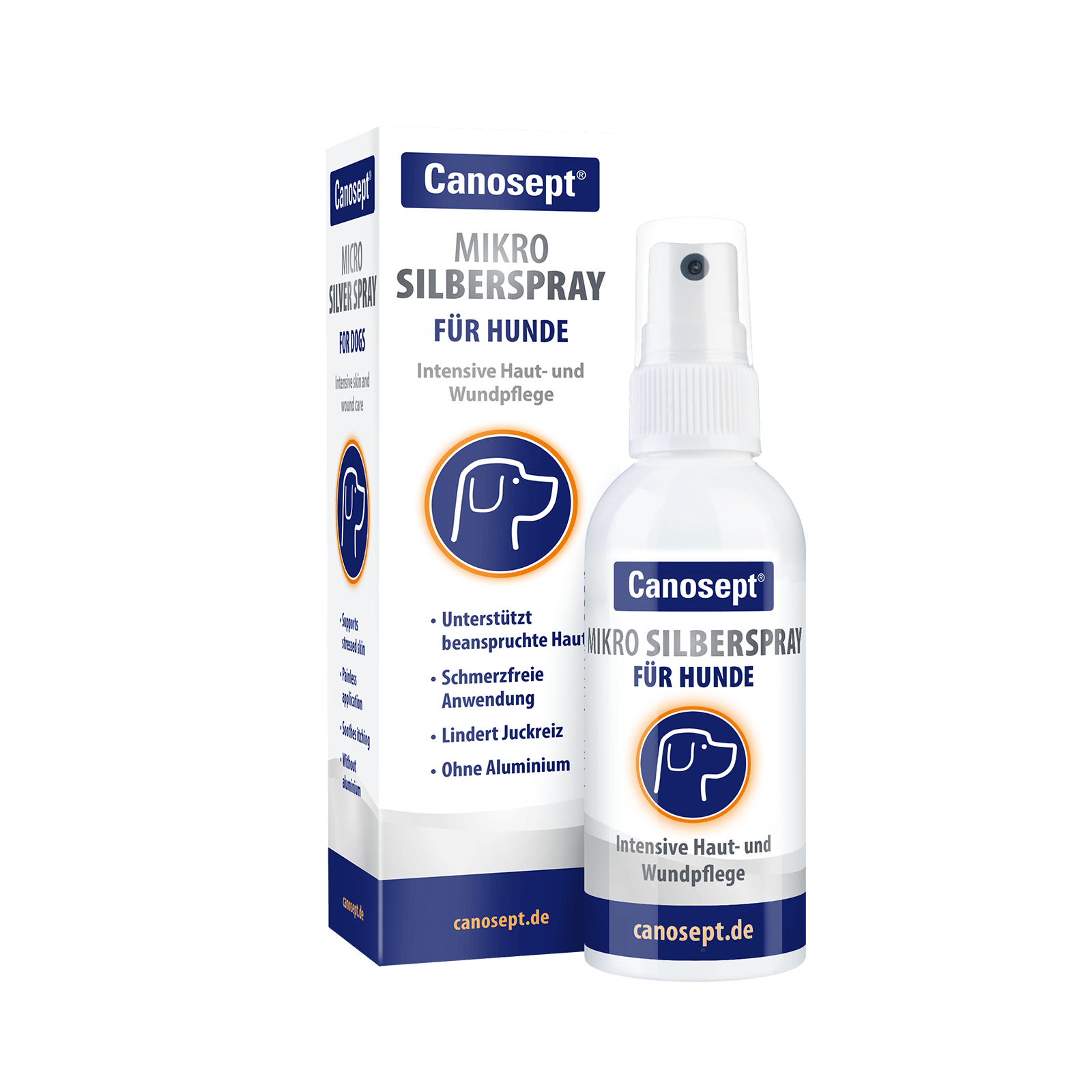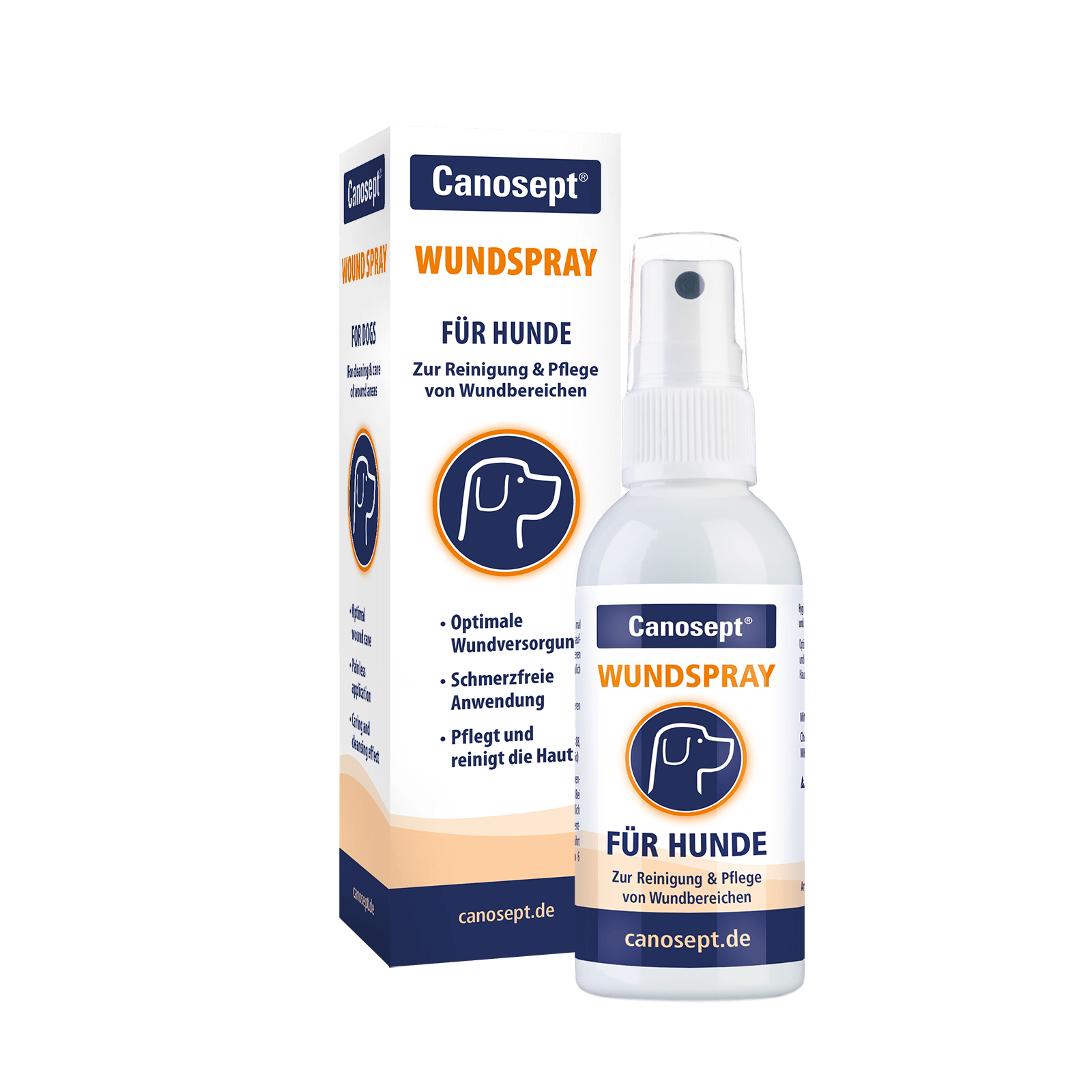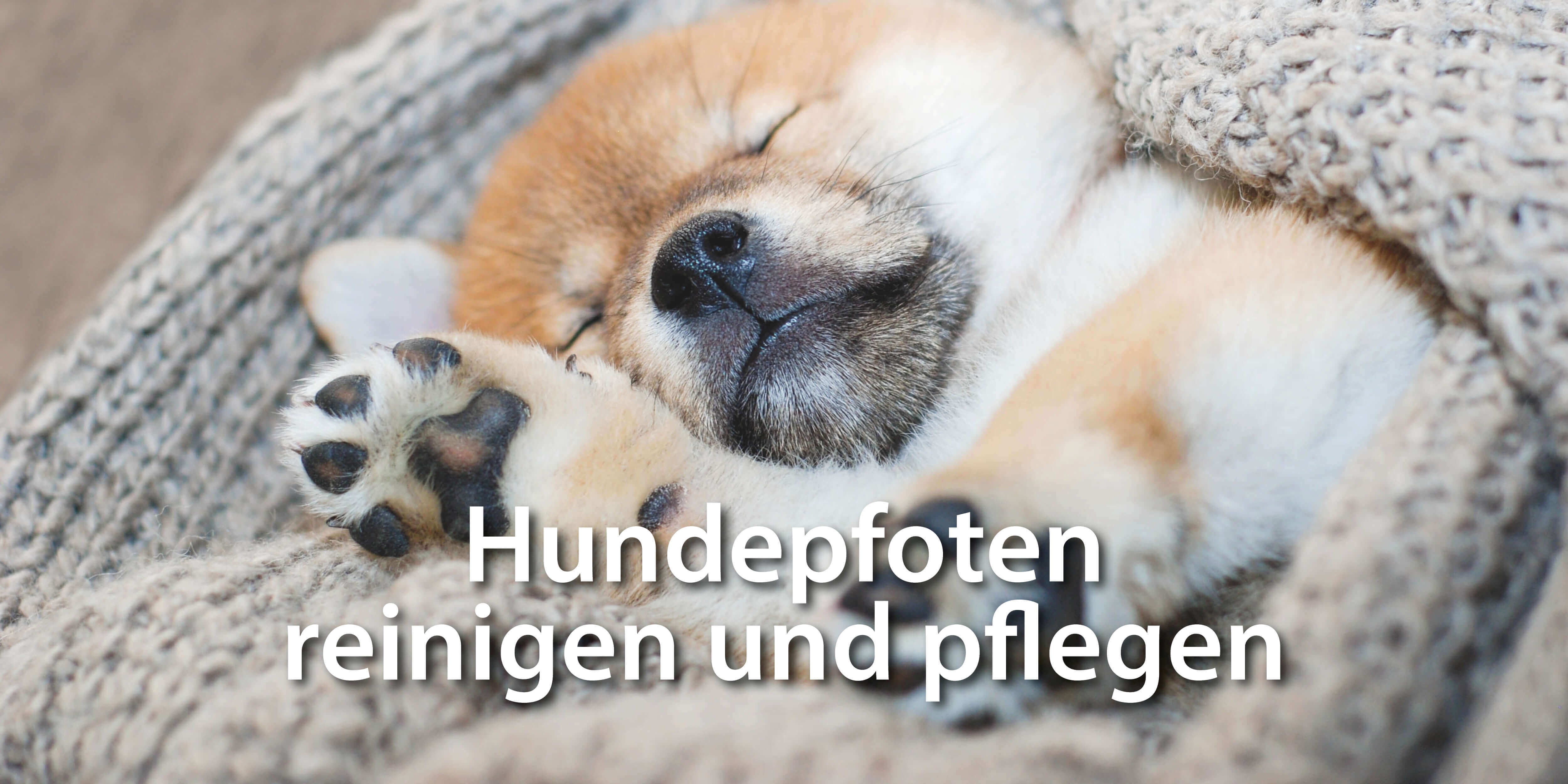Signs of sore paws in dogs
- Pain sensitivity in paws
- Protective posture and avoidance of occurrence
- Limping or hobbling
- Licking and nibbling on paws

Causes of sore paws in dogs
Your dog's paws are exposed to numerous environmental influences and stresses. Therefore, the causes of sore paws in dogs are numerous.
Foreign body
- wood splinters
- road salt
- awns
- broken glass
- Pointed stones
- Metal objects
- Sharp-edged objects
- And much more
Burns
Stepping on a cigarette butt or coming into contact with hot liquids—there are many ways your dog can burn its paws. It's often caused by surfaces that are too hot.
In summer, the asphalt can get very hot. Your own feet will help you assess the risk of your dog getting burned. If the ground is too hot to walk barefoot, you should postpone the walk. Early morning or late evening are often best times.
In winter, on the other hand, the ground can be too cold, leading to frostbite rather than burns.
Lack of paw care
Proper paw care for your dog can prevent some causes of sore paws. Dry skin can cause paws to become cracked and brittle, which can lead to pain and inflammation.
If the hair between the paw pads is too long, it can become matted. This matted fur presses and rubs unpleasantly. Another cause can be overly long claws, which lead to unpleasant pressure on the paws.
Parasites
Parasites can also cause sore paws in dogs. These include many mite species, such as Demodex mites and autumn mites.
Ticks on dogs' paws also pose a risk of injury. Therefore, tick protection for dogs should play a key role. Here's how you can prevent ticks on your dog.
insect bite
A wasp or bee sting is characterized by a central white spot around the site where the stinger penetrated the skin. The sting may also cause red swelling of the skin.
Allergies
Itching and inflammation on dog paws can also be caused by allergies. Here are a few examples of allergens in dogs:
- Pollen
- mold spores
- House dust mites
- skin flakes
- Flea saliva
- feed
Infections
Bacterial or fungal infections can affect the skin on the paws and lead to inflammation and pain.

Dog licks paws sore
Sore paws are often accompanied by itching. Your dog will try to relieve this by licking the paw. However, saliva provides moisture and nutrients, which encourages the growth of bacteria and yeast.
Boredom and stress
If your dog licks its paws frequently or even until they're sore, there may be psychological reasons. Sensitive and nervous dogs, in particular, tend to lick their paws in stressful situations. Boredom, for example, when your dog is home alone, can also cause this.
Why does my dog lick his paws raw?
If your dog licks his paws, it may be due to physical reasons, such as the itching caused by an allergic reaction. Boredom and stress can also cause your dog to lick more frequently.
Tips to prevent licking and nibbling
Due to the risk of infection, you should discourage your dog from licking and chewing their paws. Here are some tips on how to do this.

Visit to the vet
If your dog is licking and chewing his paws more frequently, it's advisable to consult a veterinarian. This can help rule out or treat health problems such as allergies, infections, or injuries.
cleanliness
Keep your dog's paws clean and dry to avoid irritation and infection.
Paw care
Applying a nourishing paw cream, such as Canosept Paw Care , protects your dog's paws. It can help reduce dryness and cracks. More tips for paw care for dogs.
Check for foreign bodies
Check the paws for foreign objects such as small stones, spikes, or thorns. Carefully remove any foreign objects caught between the paw pads or between the toes.
Reduce allergens
If an allergy is suspected, try to identify and minimize potential allergens. This could include switching to hypoallergenic food, avoiding certain environmental substances, or washing dog beds with allergen-free detergents.
Relaxation and distraction
Make sure your dog gets plenty of rest and relaxation, as well as enough mental and physical stimulation to reduce potential stress. This includes, for example, plenty of exercise and mind games.
Appropriate footwear
In some cases, wearing dog shoes or socks can protect your dog's paws from harmful substances and irritants. Make sure the shoes fit properly and are comfortable.
collar
A collar may also be necessary to prevent your dog from continuing to lick or chew on his paws. This prevents your dog from harming himself and gives the skin time to heal.
What to do if your dog has sore paws?
Paws are subjected to daily stress. Therefore, even small wounds can quickly become infected and have health consequences. Therefore, always take your dog to the veterinarian. They can assess the extent of the injury and initiate the appropriate treatment.
It's also always a good idea to have the phone numbers of several local veterinarians handy. This way, you can get valuable advice on your dog's initial care over the phone.
And: Stay calm even in an emergency. This will have a calming and reassuring effect on your dog.

First aid for injuries
If you discover an injury on your dog's paw, you should first remove any foreign objects and assess the wound. Determine how deep and large it is. Depending on the extent, first aid measures should then be administered.
Cleaning and disinfection
Dirt can easily get into a wound. To prevent infection, sore dog paws should be cleaned and disinfected promptly. Canosept Wound Spray or Canosept Wound Gel are ideal for this. These products also provide optimal wound care for superficial wounds.
Bandage and protection of the paws
In some cases, it may be necessary to apply a bandage. A distinction is made between a wound bandage and a pressure bandage. Wound bandages prevent dirt or contaminants from entering the wounds. They also immobilize the paw.
A pressure bandage, on the other hand, is an acute emergency measure to stop bleeding (source: VDH). In such a case, your dog should be seen by a veterinarian as soon as possible.
Necessary equipment for paw bandage
- Sterile compresses (wound dressings)
- Cotton wool for padding
- Gauze bandages
- adhesive plaster
How do I apply a paw bandage?
Pressure bandage
- Cover the wound with a sterile compress
- Press rolled up gauze bandage in packaging firmly onto the compress
- Use a second gauze bandage to secure the first gauze bandage and apply pressure to the wound
If the pressure bandage remains on the wound for too long, the lack of blood flow can lead to tissue death. Therefore, a veterinarian should be consulted immediately.
wound dressing
- If possible: Trim some of the fur around the wound
- Place cotton wool between each toe
- Padding the dewclaw
- Cover the wound with a sterile compress
- Pad the entire paw with cotton wool
- Secure with gauze bandage and adhesive plaster
Important: Do not apply the wound dressing too tightly. This will prevent blood vessel congestion.
First aid for burns
The most important first aid measure is cooling. This can be done under running water or using a cold pack from the refrigerator. If multiple paws are affected, you can also use damp towels as cool compresses.
What to do if your dog has sore paws?
Get an overview, administer first aid, and, if necessary, apply a pressure bandage or wound dressing. You should also always consult your veterinarian, no matter how large or small the wound.
Home remedies
The internet is full of "best home remedies for wound care." But are home remedies really suitable for treating sore paws?
Special paw care products for dogs
The use of special paw care products is always recommended. These can often prevent sore paws. And if they do occur, they can provide relief.
Canosept Paw Care offers rich care for dog paws. High-quality ingredients such as apricot oil and pathentol protect stressed paws from dryness and cracking.
Other home remedies
Aloe vera, coconut oil, etc. – many home remedies are said to have helpful properties in caring for sore paws.
Home remedies can be helpful if you pay attention to everything. A simpler and more reliable approach is to use special paw care products, which can also be used preventatively.
Which ointment for sore paws?
Special paw care products for dogs are best. While there are some helpful home remedies, special dog products like Canosept Paw Care can not only care for sore paws but also prevent them.
Prevent sore paws through control
Paw checks are an important part of your dog's paw care. This includes checking the dog's paws for:
- Residues of wood, plants or pebbles
- Other foreign bodies, such as awns
- Ticks, especially in the spaces
- Scratches or wounds
Regular check-ups allow you to detect individual changes early on and thus prevent sore paws in your dog.

What do we control?
The bales
Your dog explores the world using the pads as walking surfaces. Due to the keratinized epithelium, these pads are very robust. However, over evolutionary time, the pads have not adapted to running on concrete and asphalt.
That's why regular checkups are important to detect signs of excessive stress early on. In some cases, this can even prevent sore paws in your dog.

The interdigital areas
Foreign bodies or hairballs can easily become lodged in the hairy areas between the toes. Furthermore, sharp objects can quickly cause injuries to the sensitive skin.
To check the skin and detect sore paws in your dog, it's best to use the "thumb examination." This involves running your thumb over the hair to reveal the underlying skin. This makes it easier to detect injuries or individual changes.
The claws
Checking the claws is an important part of paw care. Check for cracked or split claw ends, or any other changes.
Checking the nail beds is also important. However, these are usually overgrown with hair and not easily accessible. As with the areas between the toes, the "thumb test" can help here. Simply stroke the hair with your thumb to reveal the nail beds underneath.

The Canosept routine for paw control
- Start with the first leg: from the top down to the claws.
- Check dewclaw.
- Carefully examine the claws, pads, and the skin between the toes and pads. It's best to check the paws using the "thumb exam," which involves running your thumb over the hair to reveal the skin.
- Look at the top of the paws.
- Repeat these steps with each additional leg, preferably always in the same order.









